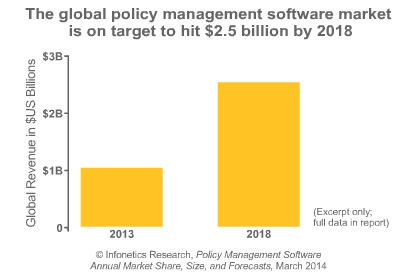Over the years, as technology evolved and mobile phones became cheaper, mobile users diversified. A recent report from the International Telecommunications Union estimated that there could be more than six billion mobile phones globally. However, as subscriber figures have grown, the revenues for mobile operators have flattened and in some cases decreased.
One reason for this has been the growing popularity among consumers for Over The Top (OTT) services such as WhatsApp and Skype. OTT services allow subscribers to circumvent the mobile operator and use alternative messaging, voice and video calling services. OTT is eroding voice and text revenues – so much so that Ovum estimates that WhatsApp has cost mobile operators around $35bn in lost text messaging revenues.
While consumers have embraced OTT services and have been willing to put up with its unreliable connectivity, patchy sound quality and video delays - the majority of enterprises have shied away from using OTT communications services for their day-to-day business needs. That’s because businesses need robust, effective and reliable communications. Therefore, the enterprise market remains the most promising and lucrative for mobile network operators. In fact, US and Western European markets alone could be worth more than $100bn. And herein lies the challenge facing mobile network operators.
While the enterprise market is the most profitable segment, it is the most elusive for mobile network operators. Most operators are acutely aware of the need to win enterprises over, but how to address it without resorting to discounting is not always clear.
Mobile operators are inherently well positioned to deliver enterprise services. A multi-service IP network combined with high-capacity wireless connectivity solutions in 3G/4G or microwave, and mobility services which can be bundled with other capabilities, puts MNOs in a unique position. By looking beyond margin-eroding discounts and looking at how they could instead provide additional value, the enterprise market could be far easier to win over. But how can a mobile operator deliver these fixed communications services to enterprises most effectively?
 This is where a new class of communications product comes to the fore: the microwave router. Situated at the cell site, the microwave router incorporates microwave connectivity and a built-in IP/MPLS router, thereby delivering a complete enterprise access and VPN solution straight from the existing mobile backhaul infrastructure – all in a single device. Not only does the microwave router deal with the growing problem of network densification by combining the functionality of up to five separate devices, it also opens up the enterprise opportunity to mobile operators. This is because, with its access to Layer 3 at the edge of the network, new access services like VPNs become easy to launch and maintain. By putting more intelligence into the cell site, operators can deliver a whole range of enterprise-focused services. That means more access services as well as better support of high-bandwidth enterprise applications.
This is where a new class of communications product comes to the fore: the microwave router. Situated at the cell site, the microwave router incorporates microwave connectivity and a built-in IP/MPLS router, thereby delivering a complete enterprise access and VPN solution straight from the existing mobile backhaul infrastructure – all in a single device. Not only does the microwave router deal with the growing problem of network densification by combining the functionality of up to five separate devices, it also opens up the enterprise opportunity to mobile operators. This is because, with its access to Layer 3 at the edge of the network, new access services like VPNs become easy to launch and maintain. By putting more intelligence into the cell site, operators can deliver a whole range of enterprise-focused services. That means more access services as well as better support of high-bandwidth enterprise applications.
A recent study from analyst firm Heavy Reading surveyed a number of international mobile network operators to gauge their appetite for microwave routers. It found that 76% of operators they surveyed declared that they are ‘likely’ or ‘very likely’ to deploy a microwave router within three years. That is that a remarkably positive consensus for such a recent innovation. Mobile operators are aware that enterprises offer the most lucrative opportunity for short and long-term revenue streams, but have consistently found it challenging. And now, a small, smart microwave router could be a big part of the answer.
_________
 *As senior vice president and chief marketing and strategy officer, Mr. McFall provides overall direction for programs to position the company in its focus markets. Mr. McFall has been with the company since the formation of its UK subsidiary in 1989. His initial assignment was in new business development, first in the UK and later the European market. In 1994 he relocated to the company's headquarters in San Jose, California, assuming responsibility for worldwide product marketing. He has accumulated over 20 years of experience in the wireless telecommunications industry, holding prior positions with two UK based companies: Ferranti International Signal plc. and GEC Telecommunications Ltd. Mr. McFall holds a bachelor of science degree in Electrical and Electronic Engineering from the University of Strathclyde in Glasgow, UK.
*As senior vice president and chief marketing and strategy officer, Mr. McFall provides overall direction for programs to position the company in its focus markets. Mr. McFall has been with the company since the formation of its UK subsidiary in 1989. His initial assignment was in new business development, first in the UK and later the European market. In 1994 he relocated to the company's headquarters in San Jose, California, assuming responsibility for worldwide product marketing. He has accumulated over 20 years of experience in the wireless telecommunications industry, holding prior positions with two UK based companies: Ferranti International Signal plc. and GEC Telecommunications Ltd. Mr. McFall holds a bachelor of science degree in Electrical and Electronic Engineering from the University of Strathclyde in Glasgow, UK.











.png)


































